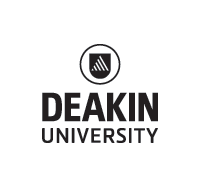SEM712 - Advanced Modelling and Simulation
Unit details
| Year | 2026 unit information |
|---|---|
| Enrolment modes: | Trimester 1: Waurn Ponds (Geelong), Online |
| Credit point(s): | 1 |
| EFTSL value: | 0.125 |
| Unit Chair: | Trimester 1: Johannes Reiner |
| Prerequisite: | For students enrolled in S460, S461, S462, S463, S465, S466, S467: SEM216 and completion of 18 credit points or Unit Chair approval. For students enrolled in S550, S751, S756, S757, S758, S759 S787: Nil. For students enrolled in courses outside of the School of Engineering: Unit Chair approval. |
| Corequisite: | Nil |
| Incompatible with: | Nil |
| Educator-facilitated (scheduled) learning activities - on-campus unit enrolment: | 1 x 2 hour seminar per week. |
| Educator-facilitated (scheduled) learning activities - online unit enrolment: | Online independent and collaborative learning including a 1 x 2 hour interactive seminar per week. |
| Typical study commitment: | Students will on average spend 150 hours over the teaching period undertaking the teaching, learning and assessment activities for this unit. This will include educator guided online learning activities within the unit site. |
Content
The aim of the unit is to provide students with the necessary skills to perform modelling and simulation using the Finite Element Method (FEM) and Multi-Body Dynamics (MBD). The unit will cover the underlying theory of the FEM and cover truss, beam, plane stress, shell and solid elements. In MBD, we will introduce the concept of computational kinematics.
An introduction to different software packages is given to perform FEA and MBD, respectively.
You will be introduced to advanced modelling tools and the theory behind how they work, with the theoretical content building directly from your previous studies on dynamics, solid mechanics, stress analysis and computer aided engineering.
You will develop fundamental knowledge of FEA and MBD, as well as the ability to apply this knowledge to applications and problems. You will find the skills learnt in this unit may be very applicable to your research projects as well as relevant jobs for your future career.
Learning outcomes
| ULO | These are the Unit Learning Outcomes (ULOs) for this unit. At the completion of this unit, successful students can: | Alignment to Deakin Graduate Learning Outcomes (GLOs) |
|---|---|---|
| ULO1 | Classify truss, beam, 2D plane stress, shell and 3D solid elements in terms of the element characteristics (number of nodes, degrees of freedom and integration points) and limitations. | GLO1: Discipline-specific knowledge and capabilities |
| ULO2 | Apply discipline specific knowledge to manually formulate and solve two dimensional finite element structures and multi-body dynamics systems. | GLO1: Discipline-specific knowledge and capabilities |
| ULO3 | Develop FEA and MBD models using commercial software. This will involve error-checking and analysis of the model results. | GLO1: Discipline-specific knowledge and capabilities |
| ULO4 | Create MBD models and FEA structural models using appropriate element types, boundary conditions, material properties and analysis type. Communicate and justify methodology and modelling parameters decisions. | GLO1: Discipline-specific knowledge and capabilities |
Assessment
| Assessment Description | Student output | Grading and weighting (% total mark for unit) | Indicative due week |
|---|---|---|---|
| Assessment 1 Short quizzes | Online quizzes | 25% (5 x 5%) | Weeks 2, 4, 6, 8 and 10 |
| Assessment 2 Report on the response of a simple structure | 8-page written report and finite element input file | 30% | Week 5 |
| Assessment 3 Group and individual report involving dynamics and stress analysis of a 3D structure | Written report, 20-page maximum Video presentation, 5-minutes maximum | 45% | Week 11 |
The assessment due weeks provided may change. The Unit Chair will clarify the exact assessment requirements, including the due date, at the start of the teaching period.
Learning resource
The texts and reading list for SEM712 can be found via the University Library.
Note: Select the relevant trimester reading list. Please note that a future teaching period's reading list may not be available until a month prior to the start of that teaching period so you may wish to use the relevant trimester's prior year reading list as a guide only.
Unit Fee Information
Fees and charges vary depending on the type of fee place you hold, your course, your commencement year, the units you choose to study and their study discipline, and your study load.
Tuition fees increase at the beginning of each calendar year and all fees quoted are in Australian dollars ($AUD). Tuition fees do not include textbooks, computer equipment or software, other equipment or costs such as mandatory checks, travel and stationery.
For further information regarding tuition fees, other fees and charges, invoice due dates, withdrawal dates, payment methods visit our Current Students website.
